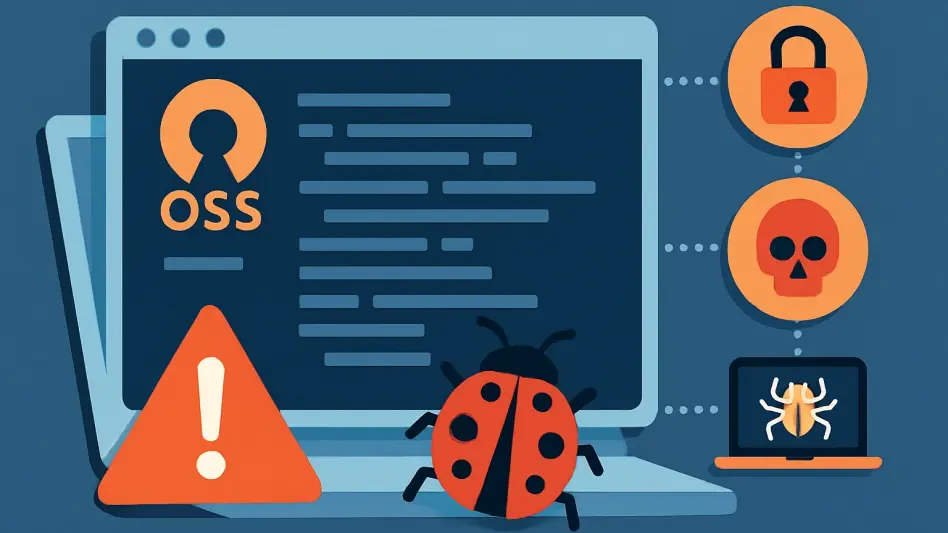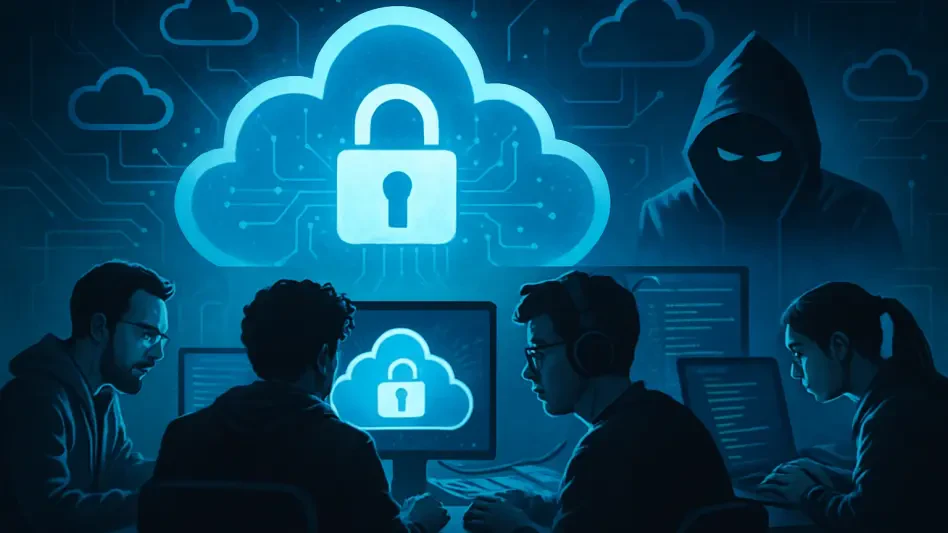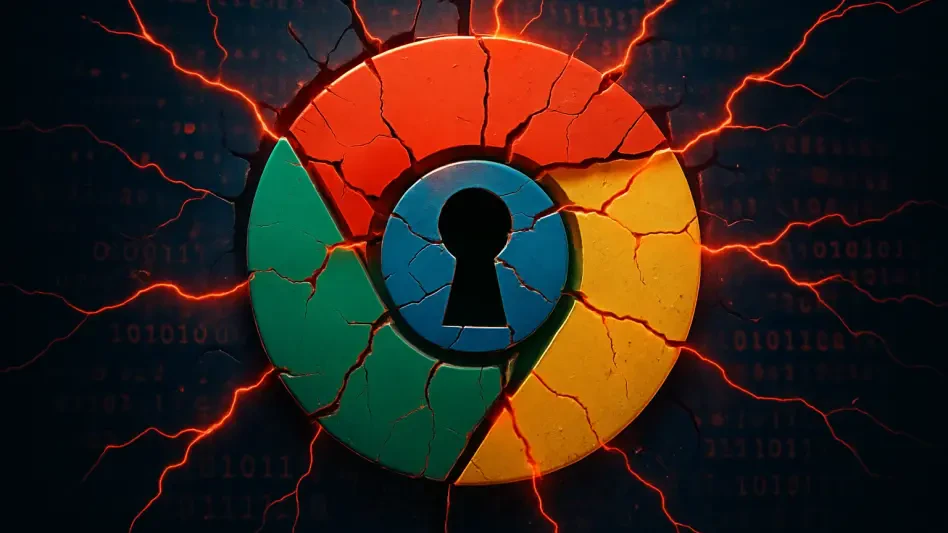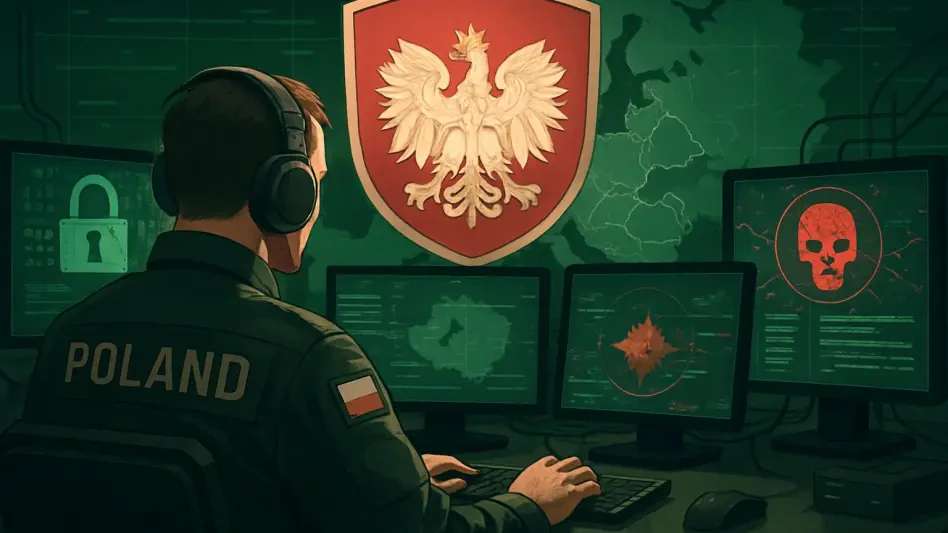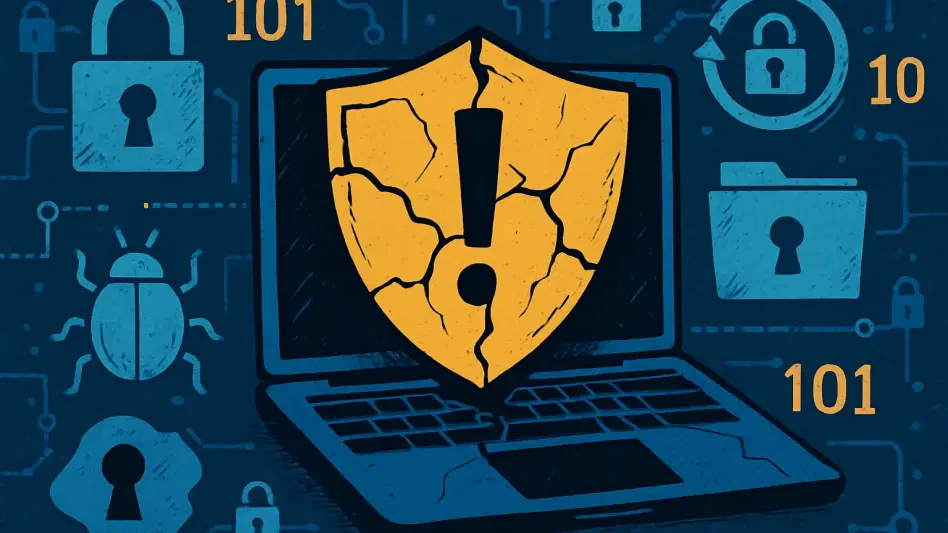The Supreme Court’s recent decision to uphold the ban on TikTok in the United States has sparked significant debate and concern. This ruling, set to take effect on Sunday, comes at a time when cybersecurity threats are increasingly prevalent. The Biden administration’s reluctance to enforce the ban and the broader implications for American users and influencers are central to this unfolding story. Concurrently, the nation faces a series of high-profile cybersecurity breaches, prompting robust federal responses to mitigate these risks.
The Supreme Court’s Decision and Its Implications
The Ruling and Its Immediate Impact
The Supreme Court’s decision to uphold the TikTok ban marks a significant legal milestone. This ruling, which is scheduled to take effect imminently, has generated widespread discussion about its potential impact on millions of American users. The Biden administration’s decision to defer enforcement to the incoming Trump administration adds a layer of complexity to the situation. Legal experts have weighed in, expressing skepticism about the long-term feasibility and fairness of such a ban. They argue that it could set a precedent for further restrictions on other social media platforms, raising concerns about free speech and digital rights.
Complicating matters further, the technology sector is closely monitoring the situation, anticipating potential ripple effects on other major players in the industry. The ban has sparked a flurry of reactions from various stakeholders, including tech companies, civil rights organizations, and digital privacy advocates. Many fear that this decision could lead to a fragmented internet where access to certain services is dictated by geopolitical tensions rather than user preference. Moreover, the decision coincides with escalating concerns about data privacy and national security, amplifying the debate around the appropriate balance between security and openness in the digital age.
Political Reactions and Economic Considerations
Senate Democratic Leader Chuck Schumer has been vocal about the societal and economic implications of the ban. Schumer’s advocacy for keeping TikTok accessible highlights the potential disruption to American influencers and users who rely on the platform for income and social engagement. Despite initial calls for a ban, former President Trump’s shift towards maintaining the app’s availability, possibly through an executive order, reflects the nuanced political landscape. This move has drawn both support and criticism from various quarters, with some viewing it as a pragmatic approach to balancing security concerns with economic realities.
The economic considerations surrounding the ban are substantial. TikTok has become an integral part of the digital economy, particularly for younger demographics and content creators. Potential revenue losses for influencers and businesses that leverage the platform for marketing are significant. Furthermore, the ban could affect job markets associated with digital content creation and management. Industry analysts estimate that the economic ripple effects could extend beyond the digital sphere, affecting related sectors such as advertising, public relations, and e-commerce. The broader implications for American corporate interests and the potential for retaliatory measures from other countries also cannot be ignored, adding layers to an already complex issue.
Cybersecurity Breaches and Federal Responses
Fortinet’s Zero-Day Vulnerability
Fortinet’s confirmation of an actively exploited zero-day vulnerability (CVE-2024-55591) in FortiOS and FortiProxy has raised alarms within the cybersecurity community. This vulnerability, which allows attackers to gain super-admin privileges on FortiGate firewalls, underscores the critical need for robust security measures. Fortinet’s issuance of a patch and a workaround demonstrates their proactive approach to mitigating this threat. The company’s swift response has been lauded, but the incident has also raised questions about the inherent weaknesses in widely used cybersecurity solutions.
Security experts caution that while patches can provide immediate relief, they do not address the broader systemic issues that make such vulnerabilities possible in the first place. The vulnerability in Fortinet products exemplifies the ongoing challenges in securing complex digital infrastructures. Organizations are urged to prioritize not only immediate fixes but also to adopt comprehensive strategies that include regular security audits, employee training, and robust incident response plans. The evolving threat landscape necessitates a multifaceted approach to cybersecurity, one that anticipates potential exploits and minimizes the window of opportunity for malicious actors.
Arctic Wolf’s Warning and Recommendations
Arctic Wolf’s alert about the mass exploitation of a zero-day vulnerability further emphasizes the severity of current cyber threats. Their recommendation to disable public-facing firewall management access is a crucial step in preventing potential breaches. These warnings highlight the importance of immediate and effective responses to emerging vulnerabilities. Organizations are advised to continuously monitor their systems for unusual activity and to disable non-essential functionalities that could be exploited by attackers. Arctic Wolf’s advisory serves as a stark reminder of the constant vigilance required to maintain cybersecurity defenses.
The broader implications of these vulnerabilities extend beyond individual organizations, affecting entire sectors and critical infrastructures. The interconnected nature of modern digital systems means that a breach in one area can have cascading effects, potentially disrupting services and compromising sensitive information on a wide scale. Arctic Wolf’s recommendations are part of a growing body of best practices aimed at minimizing these risks. Industry experts stress the importance of adopting a proactive rather than reactive stance on cybersecurity, integrating advanced threat detection technologies and fostering a culture of security awareness within organizations.
Federal Cybersecurity Initiatives
President Biden’s Executive Order
In response to persistent cyber threats, particularly from China, President Biden has issued an executive order aimed at enhancing federal cybersecurity defenses. This order focuses on improving accountability among software and cloud service providers and strengthening federal communication and identity management security. The EO also empowers government bodies to impose sanctions on ransomware actors, signaling a robust policy stance against cyber threats. The administration’s move reflects a broader strategy to fortify national defenses in the face of sophisticated and relentless cyber adversaries.
The executive order mandates stringent security measures for federal agencies and critical infrastructure operators, emphasizing the necessity of zero-trust architectures and robust encryption standards. The order also calls for the establishment of a centralized cybersecurity framework to streamline threat detection and response efforts across federal entities. By setting high standards for cybersecurity practices, the EO aims to foster a more resilient national digital ecosystem. The focus on accountability for software and cloud service providers is particularly noteworthy, as it addresses a critical vulnerability in supply chain security. This approach recognizes the need for a collective effort in safeguarding digital assets and builds a foundation for improved public-private sector collaboration in cybersecurity.
Sanctions Against North Korean Entities
The U.S. Treasury’s sanctions against entities connected to North Korea’s fraudulent IT worker schemes illustrate targeted governmental efforts to disrupt revenue streams financing North Korea’s weapons programs. This action highlights the strategic steps being taken to safeguard cybersecurity and national interests, particularly in the face of sophisticated state-sponsored cyber activities. The sanctions aim to curtail the flow of illicit funds that support North Korea’s missile and nuclear programs by targeting the IT infrastructure used in these schemes. The decision underscores a broader policy of using economic measures to address national security threats in cyberspace.
The identification and targeting of North Korean entities involved in cybercrime reflect an evolving approach to international cybersecurity enforcement. The sanctions serve as a deterrent to other state and non-state actors engaged in similar activities, signaling that the U.S. is committed to leveraging its economic influence to combat cyber threats. These measures are part of a comprehensive strategy that includes diplomatic efforts, intelligence sharing, and international collaboration to address the multifaceted challenges posed by state-sponsored cyber activities. The effectiveness of such sanctions depends on their stringent implementation and the cooperation of international partners in identifying and disrupting the financial networks that enable cybercrime.
International Collaboration in Cybersecurity
FBI’s Operation Against Chinese Malware
The FBI’s deletion of Chinese PlugX malware from over 4,200 computers is a testament to proactive governmental measures in cybersecurity response and mitigation. The collaboration with French law enforcement and private cybersecurity firm Sekoia.io underscores the importance of international cooperation in tackling widespread cyber threats. This operation, targeting Mustang Panda’s extensive campaign against U.S. systems, highlights the effectiveness of coordinated efforts. The dismantling of such a significant malware campaign demonstrates the potential impact of joint operations and intelligence sharing between nations.
These efforts underscore the necessity of a collaborative approach to cybersecurity, where national boundaries do not hinder the pursuit of cybercriminals. By pooling resources and expertise, countries can enhance their ability to identify, track, and neutralize cyber threats that operate on a global scale. The involvement of private sector partners like Sekoia.io illustrates the critical role that industry can play in supporting national security objectives. This integration of public and private efforts creates a more robust and agile response framework, capable of adapting to the rapidly evolving cyber threat landscape.
Russia’s Star Blizzard and WhatsApp Exploitation
Microsoft’s analysis of Russia’s Star Blizzard targeting WhatsApp accounts marks a significant development in cyber-espionage activities. This spearphishing campaign, which uses broken QR codes to lure targets into exposing their WhatsApp accounts, demonstrates sophisticated phishing strategies. The targeting of non-profit organizations aiding Ukraine further underscores the geopolitical dimensions of cyber threats. The exploitation of widely used communication platforms like WhatsApp reveals the lengths to which threat actors will go to achieve their objectives, exploiting every vulnerability and user trust.
The campaign’s sophistication highlights the need for continuous education and awareness efforts to protect individuals and organizations from such threats. Spearphishing remains one of the most effective tactics in the cybercriminal arsenal, often bypassing technological defenses by exploiting human behavior. The incident involving Star Blizzard and WhatsApp accounts serves as a reminder of the importance of vigilance and the adoption of comprehensive security measures. Organizations are encouraged to implement multi-factor authentication, regularly update and patch software, and conduct frequent security training for employees to mitigate the risk of falling victim to such sophisticated attacks.
Evolving Ransomware Threats
AWS Server-Side Encryption Exploitation
The ransomware campaign exploiting AWS’s Server-Side Encryption with Customer Provided Keys (SSE-C) to encrypt Amazon S3 buckets highlights the evolving threat landscape. The misuse of stolen AWS keys to encrypt victim data and demand ransoms is particularly concerning. AWS’s response and the emphasis on security best practices underscore the importance of vigilance in cloud security. This incident serves as a notable example of how cybercriminals are continuously adapting to exploit new and sophisticated attack surfaces. Organizations using cloud services must remain vigilant and proactive in securing their environments against such threats.
The attack exploited the trust placed in cloud service infrastructure, demonstrating that even robust security frameworks can be subverted. AWS’s guidance on best practices, such as rotating encryption keys and implementing least-privilege access policies, is critical in mitigating such risks. Organizations must understand that security in the cloud is a shared responsibility and take comprehensive steps to protect their data. The incident also stresses the importance of incident response plans that include routine simulations of ransomware attacks and swift, coordinated responses to minimize disruption and data loss.
OneBlood’s Ransomware Attack
The ransomware attack on OneBlood, compromising donor personal information, is another worrying example of targeting essential healthcare services. The breach, which exposed names and Social Security numbers, prompted the organization to offer free credit monitoring for affected individuals. This incident illustrates the critical need for robust cybersecurity measures in healthcare. The attack not only jeopardized sensitive personal information but also threatened the operational capabilities of a vital medical service provider. The healthcare sector, already strained by the ongoing pandemic, faces escalating threats that necessitate heightened cybersecurity vigilance.
Healthcare organizations are urged to prioritize cybersecurity investments, incorporating advanced threat detection systems, regular security audits, and comprehensive staff training programs. The incident at OneBlood underscores the potential impact of ransomware on critical services and the importance of maintaining robust defense mechanisms. Regulatory bodies have increasingly emphasized the need for healthcare providers to adhere to stringent cybersecurity standards. Ensuring compliance with these regulations and fostering a culture of security within the organization can mitigate the risks posed by cyber-attacks. The growing dependence on digital health solutions further accentuates the need for resilient cybersecurity frameworks to protect patient information and sustain essential services.
Insider Threats and Data Breaches
Telefonica’s Data Breach
The disclosure of a data breach at Telefonica, Spain’s foremost telecommunications entity, evidences vulnerabilities in internal systems. The suspected use of employee credentials to access data highlights the potential for significant data exposure and the importance of addressing insider threat vectors. This incident underscores the need for stringent access controls and continuous monitoring of internal activities to detect and prevent unauthorized access. Employee training programs focused on cybersecurity awareness are critical in minimizing the risk posed by insider threats.
The breach at Telefonica serves as a cautionary tale for organizations across sectors, emphasizing the need for comprehensive security measures that extend beyond external threats. Insider threats, whether malicious or accidental, can have severe consequences if not adequately managed. Implementing multi-layered security protocols, such as encryption, access controls, and regular audits, can significantly enhance an organization’s ability to safeguard sensitive data. The incident also highlights the importance of fostering a security-conscious culture within the organization, where employees are vigilant and proactive in protecting company assets.
Clop Ransomware Gang’s Exploits
The recent decision by the Supreme Court to uphold the ban on TikTok in the United States has generated considerable debate and concern. Slated to take effect on Sunday, this ruling arrives at a time when cybersecurity threats are becoming more common. The Biden administration’s hesitance to enforce the ban raises questions about the broader consequences for American users and influencers who rely on the platform for their livelihood and expression.
Additionally, the nation is grappling with a surge in high-profile cybersecurity breaches. These incidents have prompted the federal government to take significant steps to address and mitigate these risks. The TikTok ban, seen by some as a measure to protect national security from foreign influence and data breaches, coincides with broader national efforts to bolster cybersecurity infrastructure.
As the deadline looms, many are left wondering how this decision will impact both the digital landscape and the everyday lives of millions who use TikTok for entertainment and communication. The debates and concerns highlight the tension between national security priorities and the freedom of digital expression in an increasingly interconnected world.
In essence, the Supreme Court’s ruling on TikTok encapsulates a moment in time where technology, national security, and personal freedom intersect, posing critical questions for the future of cyberspace governance in the U.S.


